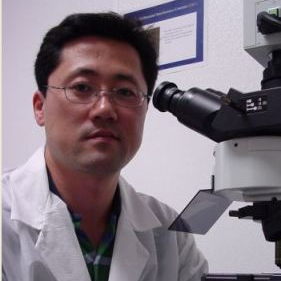Removal and Inactivation of Waterborne Pathogens during Water Treatment Processes
A special issue of Water (ISSN 2073-4441). This special issue belongs to the section "Wastewater Treatment and Reuse".
Deadline for manuscript submissions: closed (31 March 2021) | Viewed by 42766
Special Issue Editors
Interests: health-related water microbiology: Physical removal and inactivation of waterborne pathogens and rapid detection of infectious microorganisms; microbial ecology: Development of microbial source tracking markers and microbial community characterization; sustainable energy saving biological treatment processes: Microbial electrochemical (MEC) technologies
Special Issues, Collections and Topics in MDPI journals
Interests: pathogen removal and inactivation; viruses; physicochemical drinking water treatment; nutrient removal and recovery
Special Issue Information
Dear Colleagues,
The occurrence of enteric microbial pathogens and indicators, including bacteria, viruses, and protozoan parasites, in environmental water has been examined worldwide, and their removal or inactivation efficacy during water treatment processes has been investigated over the past several decades. A general strategy to resolve health-related concerns and issues pertaining to treated waters, such as drinking water and reclaimed wastewater, includes source control and application of advanced treatment processes. A great deal of attention has focused on the treatibility of commonly known pathogens and microbial indicators, and conventional treatment processes for both drinking water and wastewater have demonstrated efficiency in the removal and/or inactivation of a variety of microorganisms. However, research gaps for further studies still exist, particularily related to new treatment technologies and emerging pathogens. Reflecting the removal and inactivation efficacy of microorganisms in water, this Special Issue will welcome contributions in areas including, but not limited to: Microbial removal and disinfection in drinking water, wastewater, and reclaimed water; alternative treatment processes and current trends in advanced water treatment including advanced oxidation, UV-LEDs, Cu-Ag ionization, ferrate, etc.; water treatment processes used in centralized utilities, point-of-use devices and secondary water treatment for premise plumbing water systems; sustainable energy saving treatment and economical strategies specifically applicable in developing countries; and quantitative microbial risk assessment. This special issue can provide current state-of-the-art research on microbial treatment technologies, insights on clean and safe water production for public health, and future research directions on better treatability of waterborne pathogens.
Dr. Hodon Ryu
Dr. Brooke Mayer
Guest Editors
Manuscript Submission Information
Manuscripts should be submitted online at www.mdpi.com by registering and logging in to this website. Once you are registered, click here to go to the submission form. Manuscripts can be submitted until the deadline. All submissions that pass pre-check are peer-reviewed. Accepted papers will be published continuously in the journal (as soon as accepted) and will be listed together on the special issue website. Research articles, review articles as well as short communications are invited. For planned papers, a title and short abstract (about 100 words) can be sent to the Editorial Office for announcement on this website.
Submitted manuscripts should not have been published previously, nor be under consideration for publication elsewhere (except conference proceedings papers). All manuscripts are thoroughly refereed through a single-blind peer-review process. A guide for authors and other relevant information for submission of manuscripts is available on the Instructions for Authors page. Water is an international peer-reviewed open access semimonthly journal published by MDPI.
Please visit the Instructions for Authors page before submitting a manuscript. The Article Processing Charge (APC) for publication in this open access journal is 2600 CHF (Swiss Francs). Submitted papers should be well formatted and use good English. Authors may use MDPI's English editing service prior to publication or during author revisions.
Keywords
- microbial removal and disinfection
- water treatment processes
- clean water
- public health
- microbial risk assessment
- advanced treatment
- waterborne pathogens
- microbial indicators






